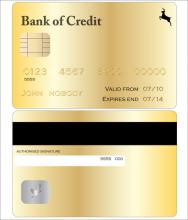 A prepaid debit card is a plastic payment card that you can use to make payments like a credit card.
A prepaid debit card is a plastic payment card that you can use to make payments like a credit card.
You often see these cards for sale at supermarket checkout aisles.
They are different from credit cards, however, because you have to put money on the card before you can use it.
Usually prepaid debit cards will not let you spend more than you have deposited onto the card.
Netspend and Green Dot are two of the bigger companies, although there are many others.
Some companies even use them for employee payroll.
These cards have two big differences from credit cards when it comes to bankruptcy.
PREPAID CARDS ARE NOT BORROWING
- If you borrow money in the time before filing for bankruptcy, it can lead to problems with your bankruptcy case
This is because:
- The money you borrow can become nondishchargeable, and the court may even decide to deny you the benefit of a discharge in general
How do you buy things then?
So you can’t borrow money in the time before bankruptcy, but you still need a way to pay for things.
What can you do?
This is where prepaid debit cards come into play.
These cards have a 12-digit account number like a credit or debit card, but since the money on the card is yours, you aren’t borrowing when you use the prepaid card to make a payment.
PREPAID CARDS ARE HARD TO GARNISH OR LEVY
As of the present time, I have not seen a creditor successfully garnish or levy a prepaid card in the state of Minnesota.
- The laws do not prohibit creditors from garnishing or levying this type of card, but creditors seem to have a hard time finding them
I suspect that the reason creditors rarely garnish or levy prepaid cards is because they:
- Do not appear on credit reports
- Are not often associated with Social Security numbers
Are there any other reasons to use prepaid cards?
Remember:
- A creditor must find an asset before they can garnish or levy it
Another reason why prepaid cards may not get levied is because there are so many companies that provide them.
- In Minnesota, there are only three large companies that provide checking accounts, but there are hundreds of prepaid debit card companies
Many Minnesotans have a checking account at US Bank, Wells Fargo, or TCF, therefore it is easy for debt collectors to find accounts at those companies and levy them.
However, there are hundreds of prepaid debit card companies, so it is much harder for a debt collector to find them.
Please Note: This may change
Creditors will probably figure out how to levy prepaid debit cards at some point.
DISADVANTAGES OF PREPAID DEBIT CARDS
However, prepaid cards should be a temporary solution for the following reasons:
1. Fees
They can charge you fees to deposit and withdraw money, and sometimes just to keep the account open.
2. No FDIC insurance
Checking accounts are insured by the FDIC, which will pay back all of your money (up to $250,000) if the bank fails.
However, if the company that issued the prepaid card fails or goes bankrupt, then you can’t get your money back.
Rush Card, a large provider of prepaid debit cards had an outage in October, 2015.
3. They don’t report to credit bureaus
If rebuilding your credit is a priority, then you are probably better off filing for bankruptcy and start using a checking account and regular credit card for payments.
Prepaid credit cards don’t report to credit bureaus, and so won’t help you re-establish your credit, whereas filing for bankruptcy will.
How should you protect your money from creditors?
The only sure way to protect your money from creditors is to actually file for Chapter 7 bankruptcy or Chapter 13 bankruptcy.
A prepaid card is a good way to keep them away for the short term, but actually filing for bankruptcy is probably the best way to return your financial life to normal.
Conclusion
If you’re struggling financially and relying on prepaid cards, then why not see if filing for bankruptcy in Minnesota is a better option?
Contact us at 612.824.4357 now, and tell us how we can help you.
Photo Credit: © Roughcollie | Dreamstime.com

